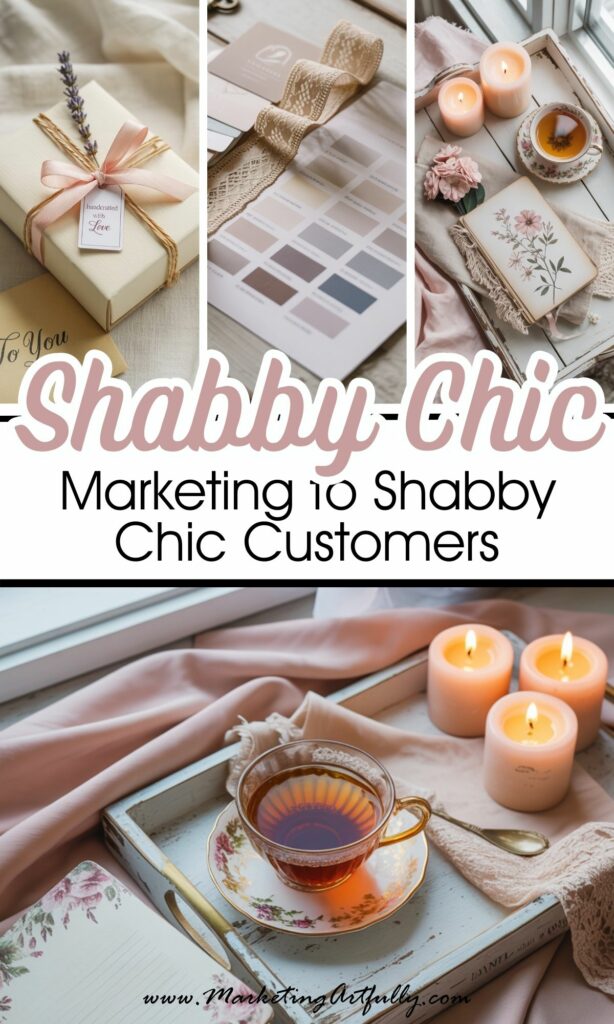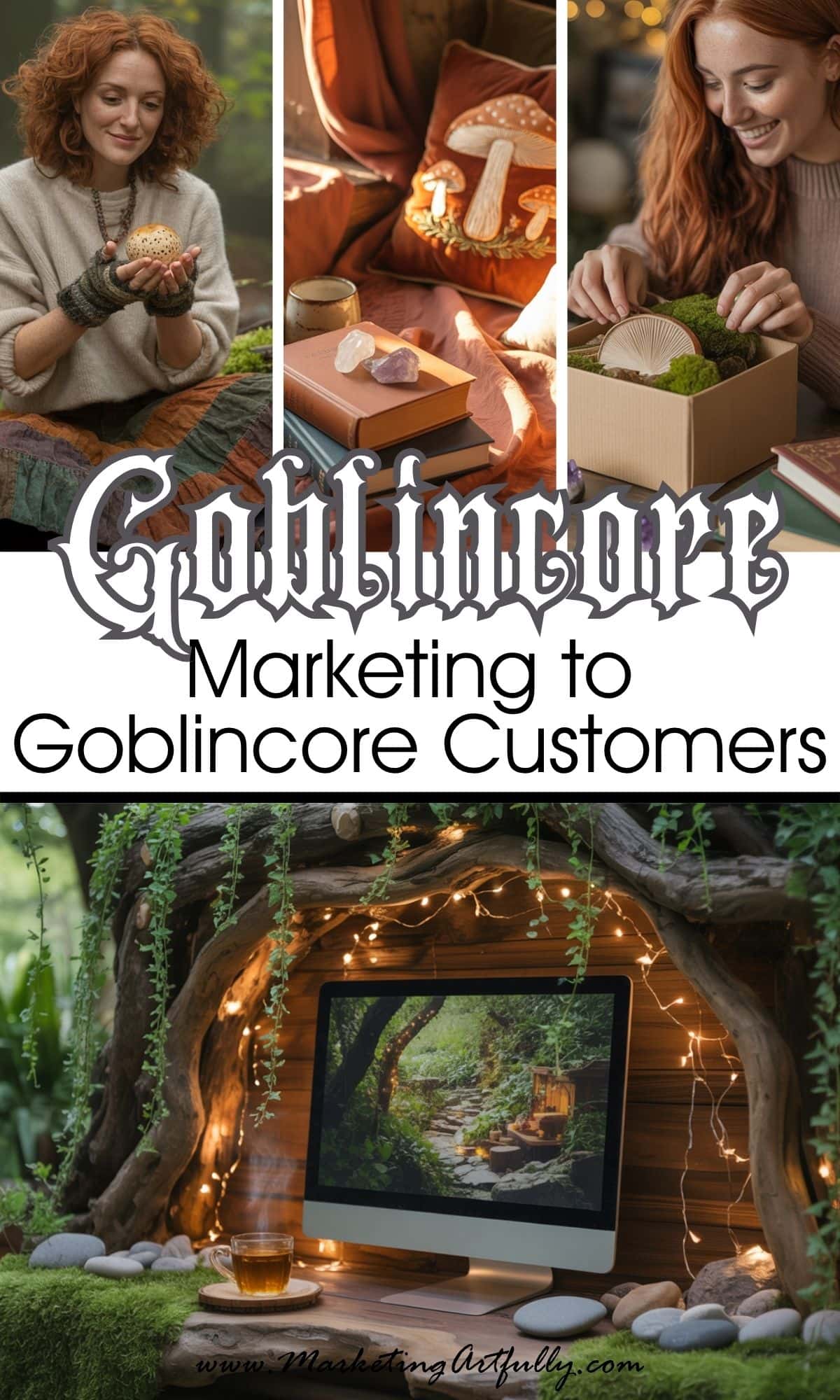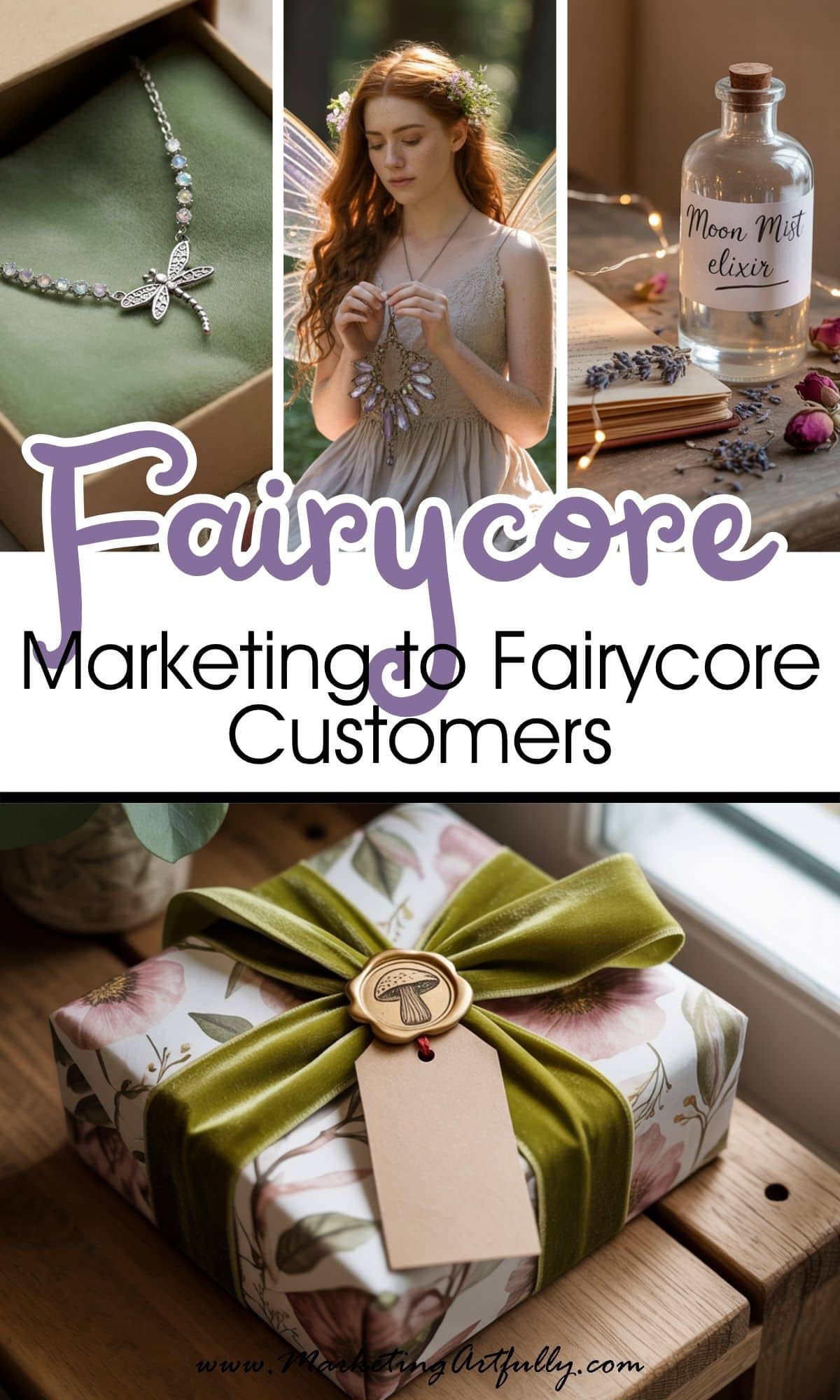If your dream customer collects mismatched china, paints everything white and pink, and lights a candle before folding laundry - welcome to the softly weathered world of Shabby Chic marketing. This aesthetic is equal parts cozy cottage, flea market magic, and feminine vintage romance. Think floral fabrics, distressed furniture, crystal chandeliers over farmhouse tables, and a gentle color palette of blush, ivory, sage, and robin’s egg blue.

As someone who personally hoards shabby chic mirrors and believes every room is better with a little chipped paint, I’m telling you - this is a buyer who’s shopping with her heart, her sense of nostalgia, and a touch of DIY sparkle!
In this guide, we’ll walk through how to market your products and brand in a way that feels like a sunny morning in a French country bedroom.
A quick note about the term "Shabby Chic"
Shabby Chic® is a trademarked brand and design philosophy originally created by Rachel Ashwell. While the phrase has become widely used to describe a soft, vintage, romantic style, it’s important to know that using “Shabby Chic” in product titles or descriptions may infringe on trademark protections.
In this post, we’re using the term to reference the broader aesthetic that many customers identify with - but for your own branding, it’s smart to use related terms like “romantic vintage,” “soft cottage style,” or “distressed feminine decor.” Always do your due diligence when naming products or setting up shop listings!

1. Aesthetic Marketing = Tapping Into Sentimental Style
When you’re marketing to a style-obsessed customer, your job is to reflect her world back to her - but elevated. Shabby Chic buyers aren’t just looking for products; they’re building a space that tells a story.
This aesthetic is built on romance, memories, comfort, and beauty with a little wear. Lean into that emotional connection in every touchpoint - from packaging to Pinterest pins.
2. What Is the Shabby Chic Aesthetic?
It’s the original soft girl aesthetic - before Pinterest even knew what to do with itself. Shabby Chic is:
- Distressed wood, faded florals, and antique charm
- French country meets flea market
- Calming color palettes: ivory, pale pink, washed-out green, light gray
- Feminine without being frilly
- Slightly worn = just right
It’s vintage-inspired without being stuffy, and rustic without feeling rough. A little luxe, a little loved!
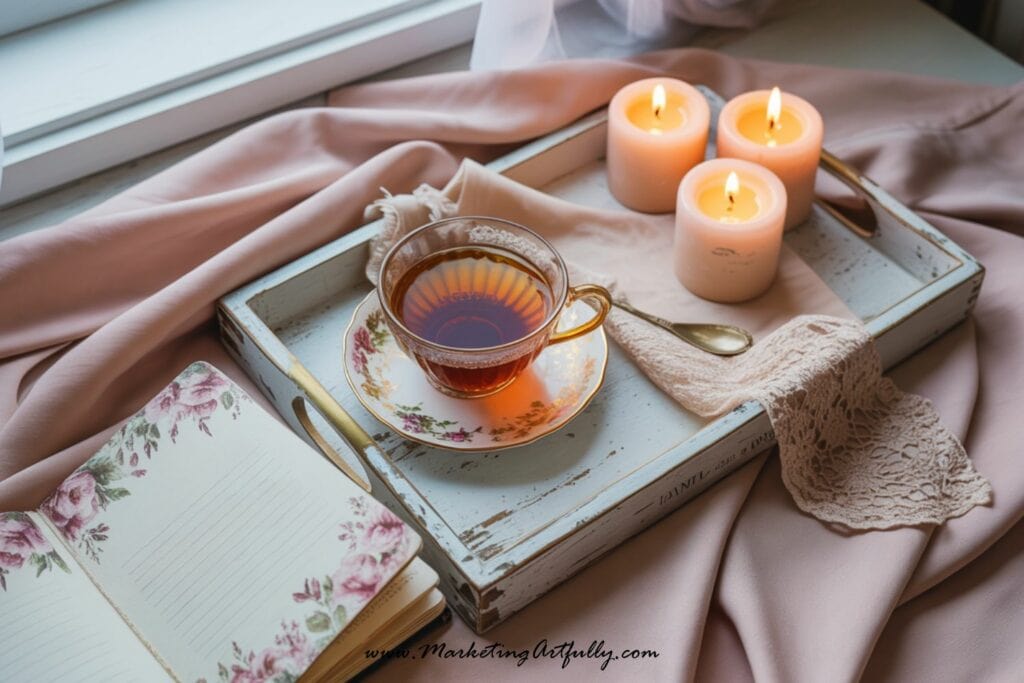
3. Why Nostalgia-Driven Aesthetics Sell
Shabby Chic customers are buying more than products - they’re buying a feeling of home, calm, and simpler times. They want pieces that feel timeless, lived-in, and romantic. If your brand can offer that emotional lift? You're golden.
Aesthetic-based selling also means:
- Easier visual content creation
- Instantly recognizable brand style
- Loyal, repeat buyers who “collect” your products
Once they love your vibe, they’re in it for the long haul.
4. Who Is the Shabby Chic Customer?
This is likely a woman in her 30s–60s (though younger buyers are coming in strong too thanks to the resurgence of vintage aesthetics). She’s creative, nostalgic, values coziness and charm, and might be:
- A DIY’er who thrifts and repurposes furniture
- A homemaker or work-from-home entrepreneur
- A collector of “beautiful little things”
She’s romantic, practical, and has a soft spot for anything with floral patterns or a good patina.

5. Product Ideas That Feel Like Treasured Finds
Your shabby chic customer loves anything that feels like it has a story - or could easily be passed down to a granddaughter someday.
Products she’ll adore:
- Painted furniture with soft distressing (white, pastels)
- Handmade throw pillows with faded floral or lace accents
- Cottage-style tea towels, aprons, or ruffled slipcovers
- Framed vintage prints, romantic wall art, or decorative mirrors
- Painted trays, glass knob hooks, vintage-inspired shelving
Also ideal:
- Candle lines in antique-style glass
- Printable art for romantic spaces
- Journals with rose-patterned covers
Bonus points for anything monogrammed, floral, soft-edged, or heirloom-feeling.
6. Branding That Feels Like a Cozy Daydream
Your branding should whisper - not shout. Think:
- Soft pastels, chalky textures, linen tones
- Cursive or serif fonts with elegance
- Gentle product names like “Rose Garden,” “Ivory Lace,” or “Cottage Morning”
- Light, airy photography with natural light and subtle styling
Packaging can include lace-printed tissue, kraft paper with blush ribbon, or simple tags with hand-stamped floral icons. Keep it romantic and personal.
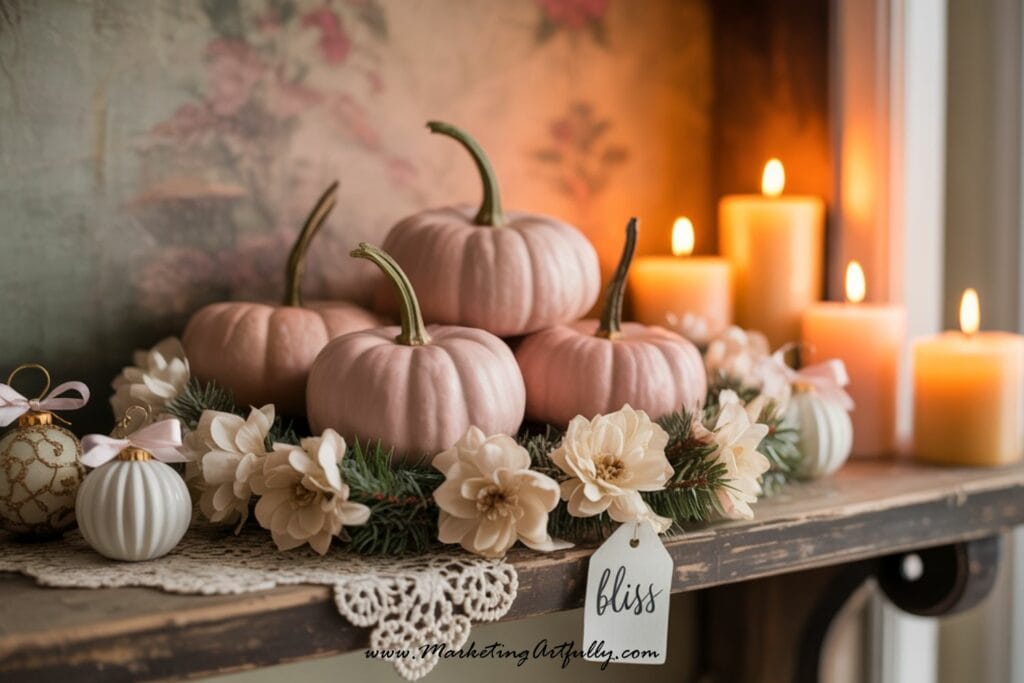
7. Content Ideas That Feel Like a Sunday Morning
The shabby chic customer lives on Pinterest - and is quietly thriving on Instagram and TikTok. She loves calm, soothing content with an inspiring twist.
Post ideas:
- Before-and-after furniture flips
- Vintage-inspired home tours
- Styling tips with thrifted finds
- DIY projects with floral flair
- Calm morning routines with candles + coffee
Use your content to show how your brand fits into the life she wants to be living.
8. Where to Reach Her Online
Start with Pinterest - it’s where she’s planning her dream space. Then focus on:
- Instagram Reels with soft lighting and cottagecore audio
- TikTok for vintage flips, romantic DIYs, and soft lifestyle content
- Etsy or Shopify for your store
- Email for seasonal lookbooks or subscriber-only product drops
Bonus: Create a freebie like a “Shabby Chic Moodboard Kit” or printable floral wall art to grow your list.

9. Naming and Describing Your Products Like a Pro
Give every product a romantic, elegant name - even if it’s a basic tray. “Whitewashed Tray” becomes “Tea & Roses Serving Board.”
Your descriptions should read like love letters:
- “This delicately distressed mirror bounces soft light around your space…”
- “Hand-sewn from vintage-inspired floral fabric, this pillow adds charm to any cozy nook.”
Use descriptive, emotional, slow language that evokes calm and beauty.
10. Why Shabby Chic Customers Keep Coming Back
These buyers are nesters - they’re building a home, piece by piece, and your brand can become their go-to for creating that soft, cozy dream.
They’ll return for:
- Seasonal decor (fall garlands, spring pillows)
- Gifts (Mother’s Day, housewarmings, weddings)
- Home updates as they refine their aesthetic
They’re emotionally connected to your style. Give them new reasons to check back.

11. Stay in Character (No Harsh Lines, No Loud Fonts)
Consistency is queen with this crowd. Everything you post, package, and promote should feel like part of a well-loved cottage filled with beautiful things.
Avoid modern, harsh, or trendy visuals. Stick to your palette, your softness, and your message of beauty, comfort, and timeless charm.
Shabby Chic Aesthetic Marketing
Marketing to the Shabby Chic customer means creating a world that feels like a warm hug from a vintage quilt. If your brand can bring soft charm, subtle beauty, and nostalgic comfort - she will not only notice you, she’ll invite you in!
Here are some more great articles that you might love!
- HUGE List of All the ‘Core’ Aesthetics For Marketing
- The Ultimate Aesthetic Core Color Palette Guide
- The Ultimate Guide to Marketing to Cottagecore Customers
